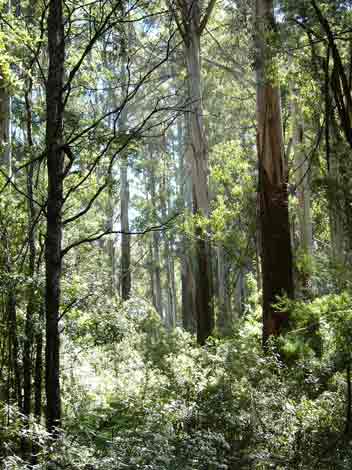
"a) The right to remove destroy or lop ingrowth native vegetation without a permit, which a landowner has been prepared to tolerate within a plantation during its long rotation
b) The right to remove native vegetation without a permit where there is reasonable evidence that past plantation establishment has failed and the native vegetation tolerated by the owner until the next rotation. (i.e. large patches of ingrowth).
c) The right to remove native vegetation without a permit where access is required to plantation stands as a lawful existing landuse particularly for harvesting and haulage.
d) All relevant overlays should, in the standard text, explicitly carry the exemptions a, b and c, above."
Source: Comments on the Impacts of the Current Exemptions on land owners and managers - Hancock Victorian Plantations Pty Ltd Grand Ridge Plantations. Manager, Environmental Services HVP and Manager, Silviculture GRP.

Morwell River Catchment/Strzelecki Ranges. This photo shows native forest listed on the National Estate. It also lies within the Cores and Links agreement and is part of the Gunyah Gunyah Rainforest Reserve. In late 2004, Hancock's Manager of the Eucalypt Estate in the Strzeleckis applied for permits from Latrobe City Council to log this type of forest, in order to build roads and to get access to plantations in very close vicinity of this area. Now it appears that Latrobe City Council are claiming that Hancock do not require permits at all. This fits in perfectly with Hancock's agenda of watering down exemptions in native vegetation retention exemptions. By not granting permits, Hancock then do not have to plant or compensate, through offsets, other forest areas for the native vegetation removed at this site. Latobe City Council's environmental performance in the past year has 'nosedived' and it appears that the Council would rather placate the short term interests of the timber industry (including the paper mill), rather than long term interests of the local environment. The community are certainly not impressed with this development and if this area is logged Hancock and Latrobe City Council will provoke further anger and mistrust in the region. Is this really what the Forest Stewardship Council supports? Why is the Hancock's Manager of the Eucalypt Estate allowed to get away with such provocative behaviour?
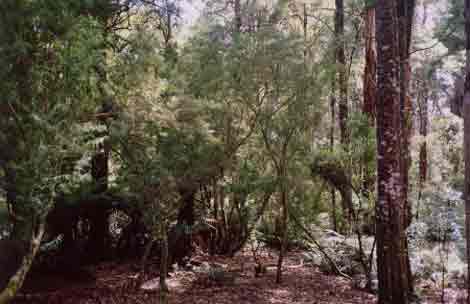
Above: The type of native forest that Hancock want to clear for logging roads. Hardly an ethical investment!
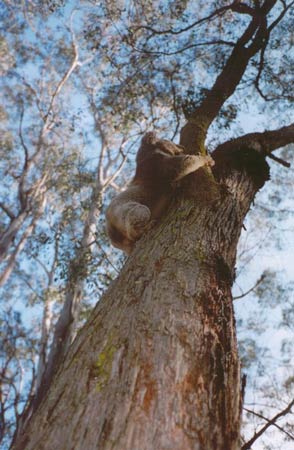
AN AMERICAN-OWNED plantation company may log some of the last remaining habitat of the so-called Strzelecki "super-koala", angering environmentalists.
They say the company is breaching a community conservation agreement.
Susie Zent, of the Friends of Gippsland Bush, says Grand Ridge Plantations, a subsidiary of the Boston-based Hancock Natural Resource Group, agreed a year ago to protect up to 9000 hectares of forest fragments through either a buy-back or land swap arrangement.
The new reserves would link Tarra Bulga National Park, near Yarram, to the Gunyah Gunyah Rainforest, near Foster, and protect some of the little wet, cool temperate rainforest remaining in the Strzelecki Ranges after 150 years of clearing for farmland and timber plantations. The fragments are also home to the genetically superior Strzelecki koala.
Grand Ridge Plantations is negotiating with the Trust for Nature and US-based Nature Conservancy to find an "equitable" solution.
But the company's general manager, Owen Trumper, confirmed that it might now need to harvest up to 20 per cent of the land."
Letter published in Sunday Age December 4, 2005.
"A dangerous fantasy
What has led us to a situation where an American-owned company has rights to log some of the last remaining habitat of the Strzelecki "super-koala" and to endanger the long-term genetic viability of this icon species across Victoria ('Loggers may threaten koala', 27/11).
Neo-Liberal policies are determining corporate control of ecosystems, corporate-backed spruikers making fortunes with the sales pitch that privatisation of public assets is the responsible way to go. And compliant Australian governments have bent over backwards to support this idelogical fantasy.
The Strzelecki Ranges were effectively privatised by the Kennett government through the sale of the Victorian Plantations Corporation to multinational raider John Hancock Financial Services in 1998.
And then, in 2001, Hancock bought the remaining areas of the Strzeleckis through acquisition of Australian Paper Plantations.
Hancock now control more than 100,000 hectares of land in Gippsland and about 250,000 hectares statewide.
Please tell me why privatisation of the Strzelecki Ranges is the best option for the long-term survival and protection of the Strzelecki super-koala and the region's rainforests?
JONATHAN LA NAUZE, Northcote.

November 2005: Strzelecki Ranges/Macks Creek Catchment. Plantation LEGL93-97. Clearfelling of Radiata Pine plantations established in 1976 is occurring in this plantation. This photo, taken from Roberts Road (looking west), reveals clearfelling in very close proximity to Strzelecki Warm Temperate Rainforest (on left of screen). This rainforest type is now extremely rare and occurs only in a few places in the Strzeleckis after being cleared by farmers and forestry companies. How compatible is intensive plantation logging and herbicide application next to such rare ecosystems?
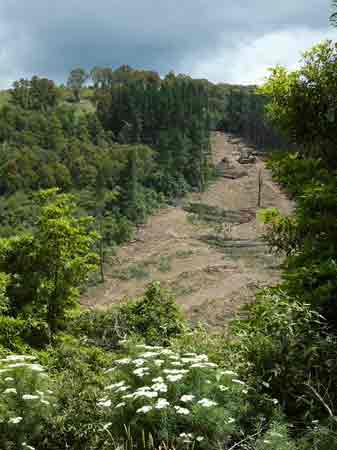
November 2005: Strzelecki Ranges/Macks Creek Catchment. Plantation LEGL93-97. According to Peel in Rainforests and Cool Temperate Mixed Forests of Victoria 1999; "Strzeleckis Warm Temperate Rainforest Distribution. This rainforest community is entirely restricted to lowland valleys of the Strzelecki Ranges in South Gippsland. Its description is derived from species lists and the vegetation mapping of Davies et al. and field observations of the author. There are no equivalent vegetation types in previous descriptions of rainforest in Victoria and it does not occur outside the State. It is entirely confined to the South East Highlands biogeographic region of Thackway and Cresswell (1995). Its occurrence in the Strzelecki Ranges north of Korumburra, represents the western biogeographical limit for Warm Temperate Rainforest in Australia. Strzeleckis Warm Temperate Rainforest is currently only known from seven localities:
*... on both sides of Macks Creek south of Roberts Road approximately 1km north-west of Macks Creek Township..."
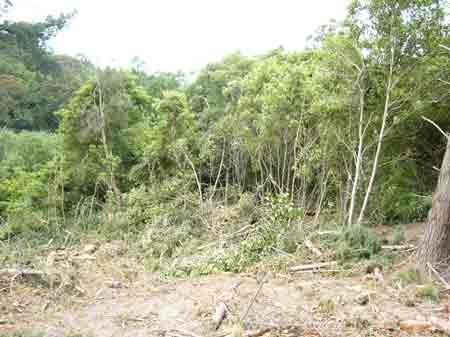
November 2005: Strzelecki Ranges/Macks Creek Catchment. Plantation LEGL93-97. Disturbance to warm Temperate rainforest by logging Radiata Pine plantations. Hancock has argueably deliberately stalled on finalising Rainforest BMP's under Forest Stewardship Council (FSC) directives since 2004. This deliberate stalling has led to mismanagement of cool temperate rainforest at Morwell River East Branch and now warm temperate rainforest at Macks Creek. Hancock can claim that logging has occurred before BMP's are adopted by the company, under guidance of FSC, allowing lower standards than are required under FSC. Local stakeholders have not been consulted or advised that logging in such sensitive areas as Macks Creek was even being undertaken by Hancock. 100 metre buffers need now to be implemented at this site.
FSC Corrective Actions Requests concerning Hancock and their rainforest management.
2004 Audit: Corrective Action Request: The Rainforest Management BMP shall be completed by 1 March 2005 including and independent peer review and further stakeholder input. The current accepted practice of stakeholder involvement in boundary marking is to continue with coupes where HVP harvests plantations adjacent to any areas of Cool or Warm Temperate Rainforest.
Timeline for Compliance: By March 1, 2005
2005 Audit: Follow-up Action: MAJOR CAR 9-2005 By the end of 2005, HVP shall complete the Rainforest BMP with peer review and external public review, including review of proposed buffer widths, and be implementing the BMP.
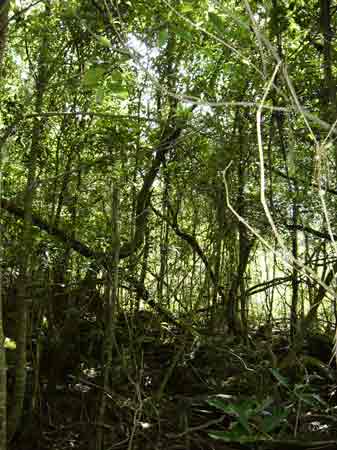
November 2005: Strzelecki Ranges/Macks Creek Catchment. Plantation LEGL93-97. Inside the Macks Creek Warm Temperate Rainforest, one of the most fragile ecosystems in the Hancock estate.

November 2005: Strzelecki Ranges/Macks Creek Catchment. Plantation LEGL93-97. Key indicator species for Strzelecki Warm Temperate Rainforest include Sweet Pittosporum (Pittosporum undulatum) and Muttonwood (Rapanea howittiana) growing with each other. The Macks Creek site also has excellent examples of the rare Sticky Wattle (Acacia howittii). Sticky Wattle is restricted to moist forests of the Strzeleckis and Upper Macalister River area in Victoria. The species is listed as rare by A.C. Beauglehole (The Distribution and Conservation of Vascular Plants in South Gippsland, Victoria (1984).
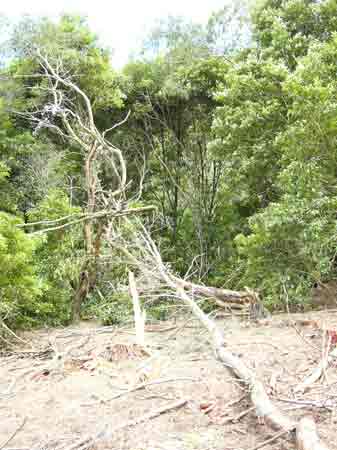
November 2005: Strzelecki Ranges/Macks Creek Catchment. Plantation LEGL93-97. More disturbance of Warm Temperate Rainforest by Hancock. 100 metre buffers need to be implemented at this location once logging of plantation has been completed.
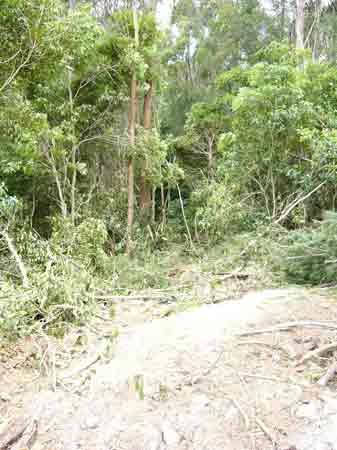
November 2005: Strzelecki Ranges/Macks Creek Catchment. Plantation LEGL93-97. More disturbance of Warm Temperate Rainforest by Hancock.
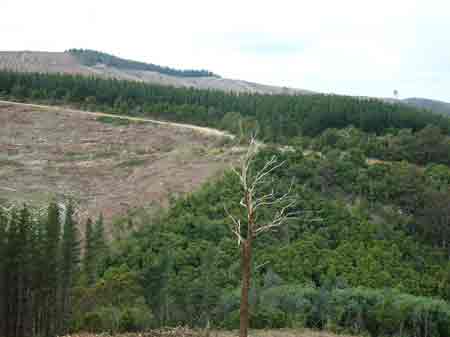
November 2005: Strzelecki Ranges/Macks Creek Catchment. Plantation LEGL93-97. This photo was taken from the western side of Macks Creek. It shows the Warm Temperate Rainforest extending onto the eastern side, in very close proximity to Roberts Road. Note the clearfelling of 1976 established Radiata Pine plantations at this site also and widespread clearfelling on ridgeline in background.
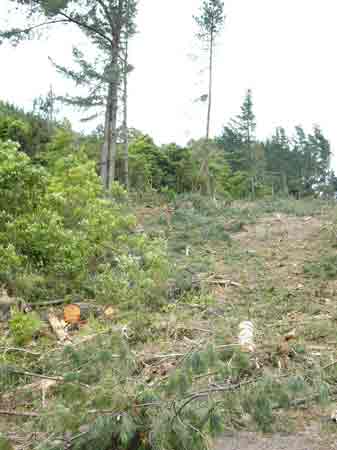
November 2005: Strzelecki Ranges/Macks Creek Catchment. Plantation LEGL93-97. More disturbance of Warm Temperate Rainforest by Hancock.
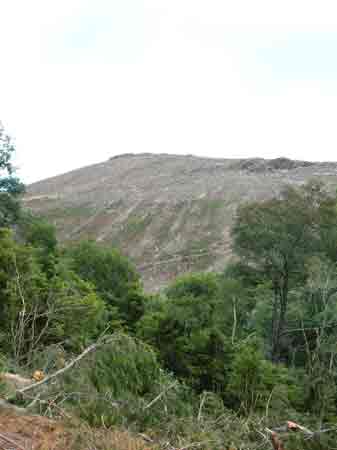
November 2005: Strzelecki Ranges/Macks Creek Catchment. Plantation LEGL93-97 Widespread pine logging has been occurring in Macks Creek catchment in recent months.
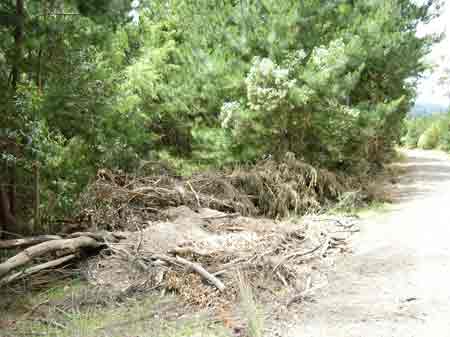
November 2005: Strzelecki Ranges/Macks Creek Catchment. Plantation LEGL93-97. About 1km of road widening has occurred at Excavator Track in this plantation. The road widening has led to the destruction of about 50 Sticky Wattles (Acacia howittii) which are a Nationally listed species. Were permits sought for the destruction of such rare species?
Sticky Wattle is restricted to moist forests of the Strzeleckis and Upper Macalister River area in Victoria. The species is listed as rare by A.C. Beauglehole (The Distribution and Conservation of Vascular Plants in South Gippsland, Victoria (1984).

November 2005: Strzelecki Ranges/Macks Creek Catchment. Plantation LEGL93-97. More widespread clearing of pine plantations in the Mack Creek catchment. This photo reveals recent clearfelling of 29 year old radiata pine in very close proximity to Macks Creek. The buffer in places at this location would probably be less than 20 metres in places. Aerial and ground based application of herbicides will soon occur at this plantation. In the event of heavy rain sediment and herbicide could make its way into Macks Creek.
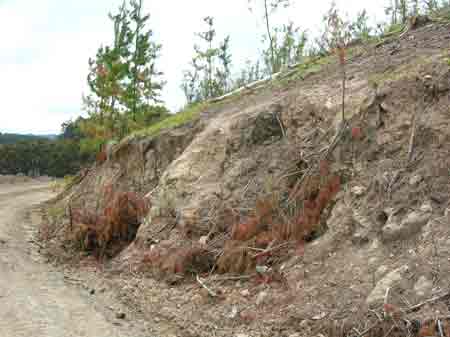
November 2005: Strzelecki Ranges/Macks Creek Catchment. Plantation LEGL93-97. Poorly constructed and maintained logging roads are also a feature of this plantation. Note the eroding batters and lack of proper drainage. In heavy rainfall vast amounts of silt and Cretaceous Sediment can be washed off logging coupes into waterways. Macks Creek flows into the Tarra River, just south of Calrossie. The Tarra River in turn flows out to the ocean in close proximity to the Nooramunga Marine Reserve.
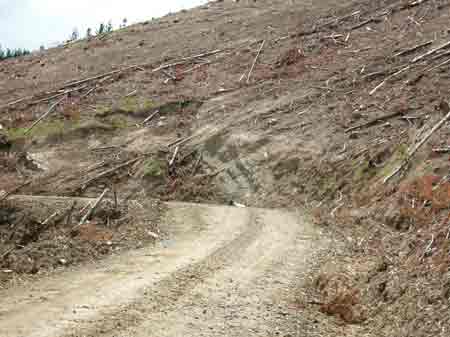
November 2005: Strzelecki Ranges/Macks Creek Catchment. Plantation LEGL93-97. Poor drainage.
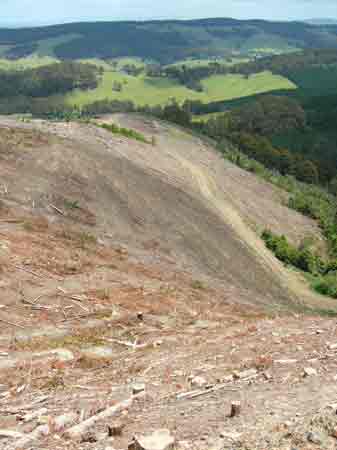
November 2005: Strzelecki Ranges/Macks Creek Catchment. Plantation LEGL93-97. Steep slopes increase water velocity and erosion potential, particularly in times of heavy rainfall.

November 2005: Strzelecki Ranges/Macks Creek Catchment. Plantation LEGL93-97. Head of gully. Note high erosion potential.
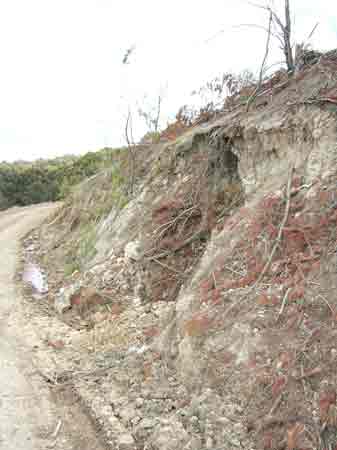
November 2005: Strzelecki Ranges/Macks Creek Catchment. Plantation LEGL93-97. Sub-standard road batters and drainage.

November 2005: Strzelecki Ranges/Macks Creek Catchment. Plantation LEGL93-97. Recent pine clearfell, soon to be aerially sprayed.
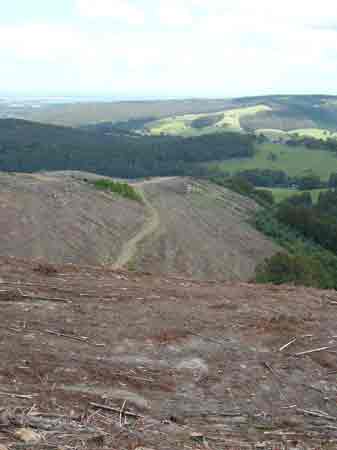
November 2005: Strzelecki Ranges/Macks Creek Catchment. Plantation LEGL93-97. Recent pine clearfell, soon to be aerially sprayed.

November 2005: Strzelecki Ranges/Morris Creek Catchment. Plantation LEGL93-97. Morris Creek Road, recently graded and reopened. Was native vegetation removed at this location?

November 2005: Strzelecki Ranges. Yarram Blackwarry Road, a major tourist road which is adjacent to Tarra Bulga National Park, is now only a 4WD road, due to logging activities by Hancock which include thinning of eucalypts in the Greig Creek Catchment. Why should tourists now have to contend with poor roads as a result of Hancock's activities?
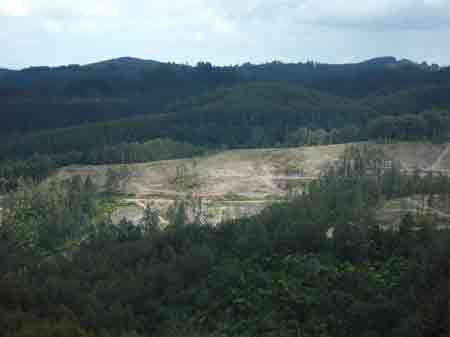
November 2005: Strzelecki Ranges/Middle Creek catchment (Parish of Jumbuk). Recent clearfelling of Mountain Ash on land leased from the Crown under the 1961 Wood Pulp Agreement. Middle Creek catchment also contains large private land holdings by Hancock. Thousands of hectares will be clearfelled in the next few years in this catchment.
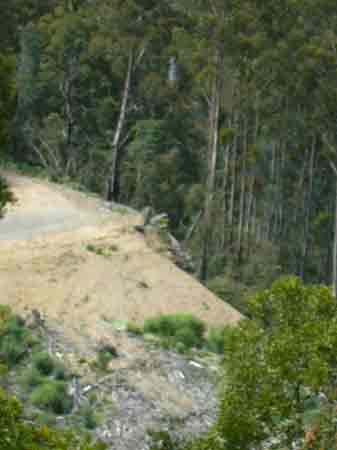
November 2005: Strzelecki Ranges (Parish of Jumbuk). Blucher Creek/Middle Creek catchment probably on 1961 leasehold land where a road blowout occurred earlier in the year. Note the high erosion potential of this logging road.
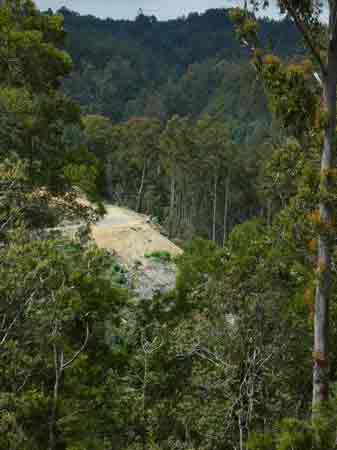
November 2005: Strzelecki Ranges (Parish of Jumbuk). Blucher Creek/Middle Creek catchment probably on 1961 leasehold land where a road blowout occurred earlier in the year. Note the high erosion potential of this logging road.
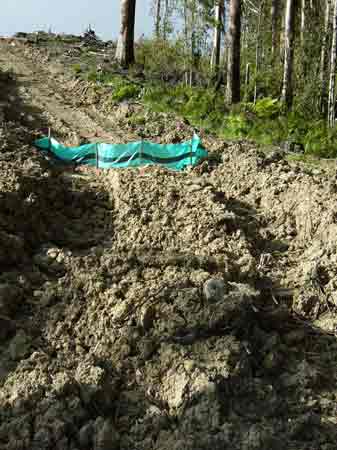
November 2005: Strzelecki Ranges (Parish of Jumbuk). Morwell River East Branch catchment on 1961 leasehold land. Note the high erosion potential of this logging road which obviously breaches the Code of Forest Practice. Where is the Latrobe Shire, who are the responsible authority for maintaing the Code at this location?

November 2005: Strzelecki Ranges (Parish of Jumbuk). Smiths Creek/Middle Creek on 1961 leasehold land, managed by Hancock. Recent works by Hancock at this creek crossing have resulted in a blow out after recent snow and heavy rain. Was this a money wasting exercise as culverts were not included in the construction, despite the recommendations of locals?
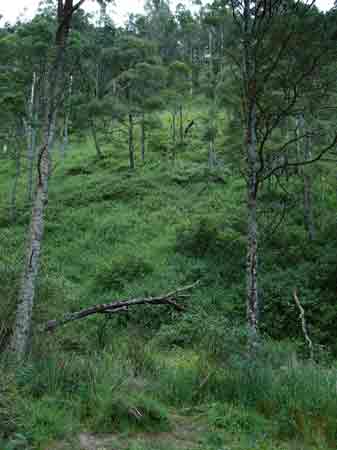
November 2005: Strzelecki Ranges (Parish of Jumbuk). Smiths Creek/Middle Creek on 1961 leasehold land, managed by Hancock. A massive weed problem occurs at this site.

Yarrowee River catchment/Ballarat. November 2005/Plantation LEGL 93-34: Recently logged plantations in very close proximity to Tinworth Avenue. Will this area be reestablished with pine in such close proximity to residents? Will spraying of herbicides also eventuate?
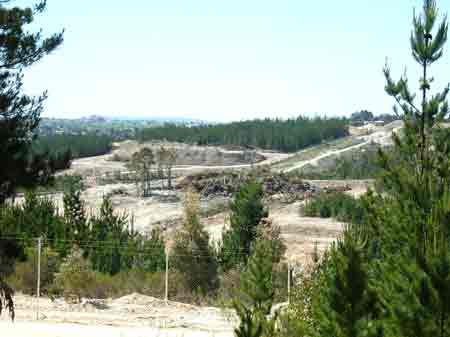

Yarrowee River catchment/Ballarat. November 2005/Plantation LEGL 93-34: Appalling creek crossing on this site now maintained by Ballarat Goldfields N.L.
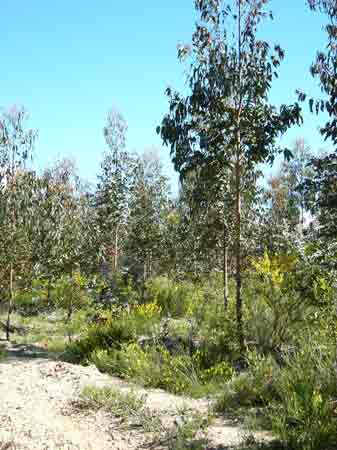
Canadian Plantation/Ballarat Region: Plantation replanted with approximately 300,000 bluegums in 2002. Area now likely to be leased by EPFL (East Victorian Plantation Forest Company of Australia Pty Ltd) who are a consortium of Japanese paper manufacturers and a trading house. EPFL has a Heads of Agreement for the sale of bluegum with Enviroinvest. Looks like Hancock is no longer the leasee of this plantation.
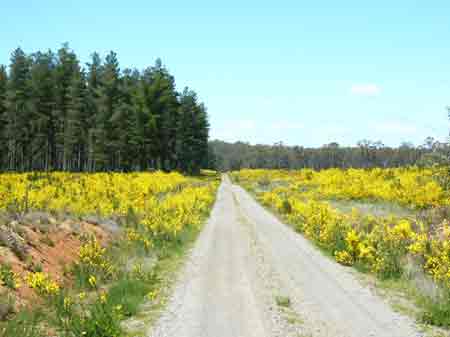
November 2005. Ballarat Region Spargo Plantation: Proliferation of English Broom which is a noxious weed inside this plantation. How will noxious weeds be controlled in this plantation given that they occur over a vast area and the plantation is surrounds a domestic water reservoir?
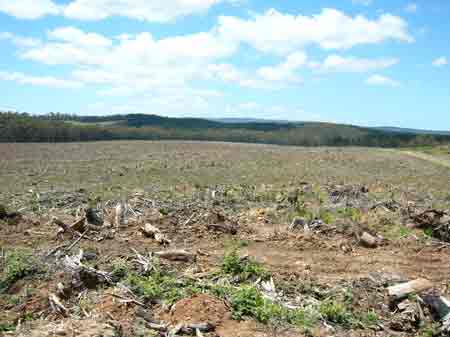
November 2005. Ballarat Region Spargo Plantation: Widespread plantation logging has recently been occurring in this domestic water supply for the city of Geelong.